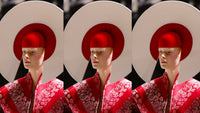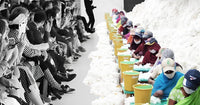Unveiling the Technological Triumph of Fiber Transformation
1 min 50 seconds read
The fashion industry is a constantly evolving landscape that is heavily influenced by advancements in technology and cutting-edge materials. Over the years, we have seen a remarkable transformation in the fabrics used in fashion, from natural fibers like silk, cotton, wool, and linen to man-made fibers that have revolutionized the industry.
The first generation of man-made fibers was produced using basic technology for synthetic fibers and fabrics. Chemically produced fibers such as rayon, nylon, polyester, and acrylic were created using polymers, which allowed for a wide range of fibers to be produced for different applications. With the second generation of development, each of the generic fibers underwent modification to improve both performance and aesthetics, resulting in many different versions engineered to suit a particular product.
Nylon was the first synthetic fiber to be commercially produced by DuPont in 1930s. It quickly gained popularity for its strength, elasticity, and resistance to abrasion, and was used in a variety of applications including clothing, parachutes, and ropes.
- Plant-Based Fibers (Linen, Cotton)
- Animal-Based Fibers (Wool, Silk)
- Mineral-Based Fibers (Asbestos)
Today, we find ourselves in a new phase of development where fibers are being custom-tailored for specialized markets. Predetermined aesthetics and performance are now being built into the fibers at the production level. Researchers worldwide are developing reactive fibers, smart textiles, and sustainable alternatives to traditional synthetic fibers. Innovations include fabrics made from recycled PET bottles, biodegradable polymers, and materials derived from renewable resources like corn and soybeans.Linen dress, Wool Coat & Asbestos fabric
Smart textiles are one of the most significant developments in this phase of development. These textiles have built-in sensors, microprocessors, and other electronic components that enable them to respond to the environment, monitor vital signs, and interact with other devices. They have potential applications in healthcare, sports, and the military and have the potential to revolutionize the way we live.
The development of sustainable alternatives to traditional synthetic fibers is also a significant trend in the fashion industry. Many fashion brands are now turning to renewable resources like bamboo, hemp, and organic cotton to create sustainable fashion. These materials are biodegradable, require less water, and are grown without the use of harmful chemicals, making them a better choice for the environment.
The world of fashion is continually changing and expanding, and fibers & textiles - whether man-made or naturally sourced - play a critical role in its advancement and adaptability. These fabrics present limitless opportunities for aspiring designers and fashion lovers to experiment with. Nevertheless, there is still much-undiscovered territory in the fiber and textile industry, making it an engaging and inventive area for those who participate in its development.










